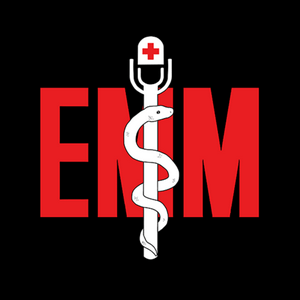Episode 951: Pediatric Febrile Seizures
Contributor: Taylor Lynch, MD Educational Pearls: Pediatric febrile seizures are defined as seizures that occur between the ages of six months to five years in the presence of a fever greater than or equal to 38.0 ºC (100.4 ºF). It is the most common pediatric convulsive disorder, with an incidence between 2-5% What are the types of seizures? Simple: Tonic-clonic seizure, duration Complex: Duration >15 minutes, requires medication to stop the seizing, multiple occurrences in a 24-hour period, PRESENCE of focal features, PRESENCE of Todd’s paralysis What are the causes? Caused by infectious agents leading to fever. Seen with common childhood infections. It is debated whether the absolute temperature of the fever or the rate of change of temperature incites the seizure, but current evidence points to the rate of change of the temperature being the primary catalyst What are the treatment considerations? For simple febrile seizures, work-up is similar to any pediatric patient presenting with a fever between the ages of six months and five years Thorough physical exam to rule out any potential of meningeal or intracranial infections Prophylactic antipyretics are not believed to prevent the occurrence of febrile seizures Disposition? If the patient has returned to normal baseline behavior following a simple febrile seizure, and the physical exam is reassuring, the patient can be discharged home. Additional labs, electroencephalogram, or lumbar punctures are not indicated in simple febrile seizures as long as the physical exam is completely normal Any evidence of a complex seizure requires further workup Fast Facts: Patients with a familial history of febrile seizures and developmental delays have a higher risk of developing febrile seizures If a child has one febrile seizure, there is a 30-40% chance of another febrile seizure by age 5 Only 2-7% of children with febrile seizures go on to develop epilepsy References: 1. Berg AT, Shinnar S, Hauser WA, Alemany M, Shapiro ED, Salomon ME, et al. A prospective study of recurrent febrile seizures. N Engl J Med. 1992 Oct 15;327(16):1122–7. 2. Schuchmann S, Vanhatalo S, Kaila K. Neurobiological and physiological mechanisms of fever-related epileptiform syndromes. Brain Dev. 2009 May;31(5):378–82. 3. Nilsson G, Westerlund J, Fernell E, Billstedt E, Miniscalco C, Arvidsson T, et al. Neurodevelopmental problems should be considered in children with febrile seizures. Acta Paediatr. 2019 Aug;108(8):1507–14. 4. Subcommittee on Febrile Seizures, American Academy of Pediatrics. Neurodiagnostic evaluation of the child with a simple febrile seizure. Pediatrics. 2011 Feb;127(2):389–94. 5. Pavlidou E, Panteliadis C. Prognostic factors for subsequent epilepsy in children with febrile seizures. Epilepsia. 2013 Dec;54(12):2101–7. 6. Huang CC, Wang ST, Chang YC, Huang MC, Chi YC, Tsai JJ. Risk factors for a first febrile convulsion in children: a population study in southern Taiwan. Epilepsia. 1999 Jun;40(6):719–25. 7. Hashimoto R, Suto M, Tsuji M, Sasaki H, Takehara K, Ishiguro A, et al. Use of antipyretics for preventing febrile seizure recurrence in children: a systematic review and meta-analysis. Eur J Pediatr. 2021 Apr;180(4):987–97. Summarized by Dan Orbidan, OMS1 | Edited by Dan Orbidan & Jorge Chalit, OMS3 Donate: https://emergencymedicalminute.org/donate/

